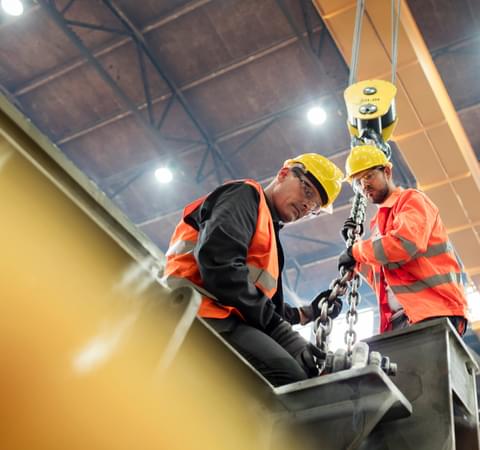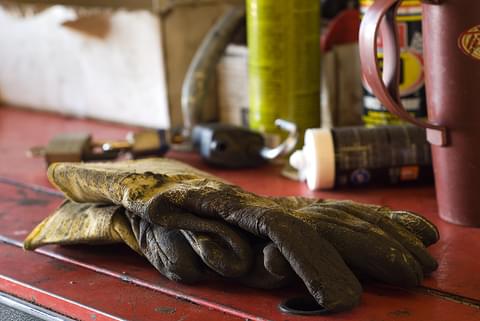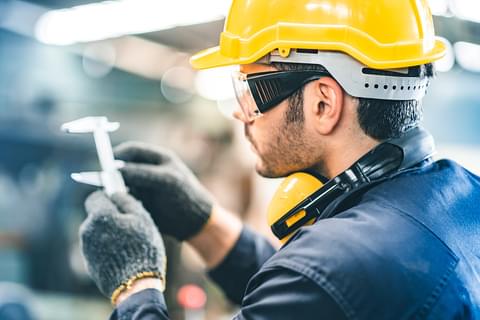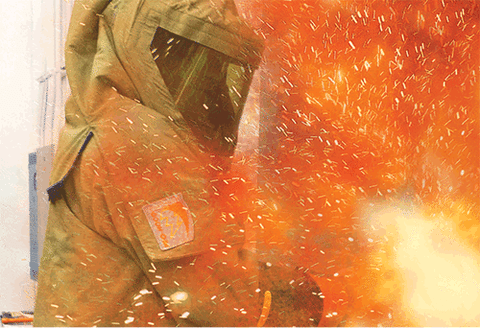
Personal Protective Equipment (PPE) refers to protective clothing, helmets, goggles, or other garments or equipment designed to protect the wearer's body from injury or infection.
According to the HSE (Health and Safety Executive), PPE is defined in the PPER 1992 as "equipment that will protect the user against health or safety risks at work. It can include items such as safety helmets, gloves, eye protection, high-visibility clothing, safety footwear, and safety harnesses. It also includes respiratory protective equipment (RPE)."
PPE serves as a crucial line of defence against various hazards in the workplace, ensuring the safety and well-being of workers by minimising the risks associated with their tasks or environment.

Protection from hazards
PPE serves as a barrier between the worker and workplace hazards, such as chemicals, biological agents, sharp objects, falling objects, noise, radiation, and electrical hazards. By wearing appropriate PPE, workers can reduce their exposure to these dangers, minimising the risk of injury or illness. For example, wearing safety helmets can protect against head injuries from falling objects, while protective gloves can prevent cuts, burns, and chemical exposure. Respiratory protective equipment (RPE) can safeguard against inhalation of harmful substances, reducing the risk of respiratory diseases.
Over two million people worldwide suffer from work-related injuries each year, which makes buying PPE one of the most important decisions you can make. PPE doesn’t reduce the risk itself, that’s why it’s at the bottom of the hierarchy of controls. But the right PPE could be the difference between life and death - that's why partnering with a trusted PPE product supplier is essential.
All working environments are full of hazards, whether you work on a railway or handle food. Employers therefore have a legal obligation to protect their workers and are responsible for completing risk assessments to determine the types of PPE needed. The PPE Regulation legal laws can be used for guidance as to what PPE is needed to match, and protect, the possible risks around the workplace.
Promotion of safety culture
Encouraging the use of PPE fosters a culture of safety in the workplace. When employers prioritise the health and well-being of their workers by providing and enforcing the use of PPE, it demonstrates a commitment to maintaining a safe work environment.
Enhancement of productivity
When workers feel safe and protected, they are more likely to focus on their tasks without the distraction of safety concerns. Additionally, by minimising the risk of injuries and illnesses, PPE helps maintain a consistent workforce, preventing disruptions due to absenteeism or turnover caused by workplace accidents.

Order fully customised products for your business needs with CtrlCloud.
Many regulatory agencies, such as the Health and Safety Executive (HSE), mandate the use of PPE in certain workplaces and for specific tasks. Non-compliance with these regulations can result in penalties, fines, and legal actions against employers. The severity of penalties may vary depending on the jurisdiction and the extent of the violation.
Under the Personal Protective Equipment at Work Regulations 1992, employers are mandated to provide appropriate and well-maintained personal protective equipment (PPE) to employees working in environments with potential hazards, without imposing any charges. This legal requirement underscores the importance of safeguarding workers from various occupational risks.
Industries such as construction, forestry, rail operations, and power utilities are particularly prone to specific hazards necessitating the use of PPE. For instance, construction workers face dangers like falling objects and exposure to harmful substances, highlighting the necessity for safety helmets and respiratory protection.
Similarly, forestry workers require PPE such as chainsaw protection and high-visibility clothing to mitigate risks associated with heavy machinery and uneven terrain. Rail workers need protective gear like high-visibility vests and safety boots to enhance visibility and safeguard against electrocution or impact injuries.
Furthermore, power workers dealing with electricity must utilise insulated gloves and protective clothing to prevent electrical shocks and burns. Compliance with these regulations not only ensures legal adherence but also prioritises the safety and well-being of employees in hazardous work environments.

As of April 6, 2022, the Personal Protective Equipment (PPE) at Work Regulations specify requirements regarding the provision, use, and maintenance of PPE in the workplace. These regulations cover all employees across various industries where PPE is necessary to mitigate workplace hazards. The regulations apply to a wide range of sections, including but not limited to construction, manufacturing, healthcare, agriculture and transportation.
Inspections, audits and investigations are conducted to ensure compliance with PPE requirements. Meaning that ALL employers are responsible for assessing risks, providing suitable PPE, training employees on its correct usage, and ensuring that PPE is properly maintained and replaced when necessary.
Under PPER 2022, the types of duties and responsibilities on employers and employees under PPER 1992 remain unchanged but are extended to now target broader workers, those who now:
Deciding if a product is PPE is the responsibility of the manufacturer, and they may seek guidance from various sources. The PPE Directive defines PPE by splitting it into three classes. This makes certain that each piece of equipment fits the legislated standard for its specific use. This also ensures that PPE has the proper documentation and goes through the correct examinations when necessary.
Category I - PPE is simple in design and simple in terms of what risk it’s protecting you from.
Category II - Covers ‘intermediate’ PPE. This is PPE that is neither complex nor simple in design.
Category III - Covers complex PPE used to protect against hazards that can lead to death or permanent injuries.

PPE should only be used as a last resort, meaning that it should be considered after all other possible methods of hazard control have been explored and implemented.
Elimination – Physically remove the hazard
Substitution – Replace the hazard
Engineering controls – Isolate people from the hazard
Administrative controls – Change the way people work
PPE – Protect the worker with personal protective equipment
While PPE plays a crucial role in protecting workers from workplace hazards, it should be viewed as a supplementary measure rather than the primary method of protection. Employers should prioritise other control measures whenever feasible to create safer working environments and minimise reliance on PPE alone.

When it comes to PPE procurement, cutting corners is not an option. Partnering with a BSIF registered supplier like Tower Supplies ensures authenticity, quality, and compliance with safety standards for purchased PPE. Customers gain confidence in knowing they're getting products of the highest standards, ethically sourced, and meeting all necessary regulations. This partnership safeguards lives and wellbeing, making it a crucial step in ensuring worker safety that should never be compromised.
By choosing Tower, you can rest assured that you’re working with a company dedicated to upholding the highest safety standards and providing authentic, quality PPE. Click here to find out how your organisation can benefit from working with Tower.
PPE and protective workwear is essential for protecting workers against hazards whether that be extreme heat, flames, falling debris, or chemicals etc.
Employers have a responsibility to protect their workers and in many cases, the correct health and safety clothing can prevent irreversible damage.
